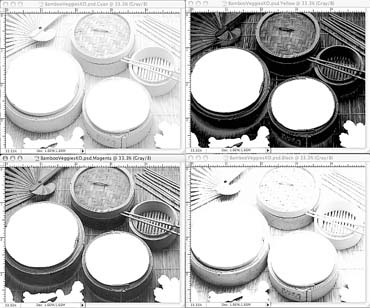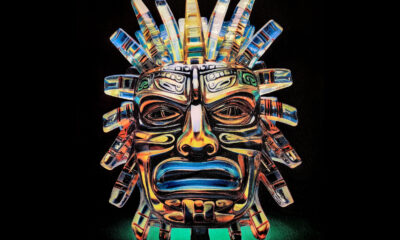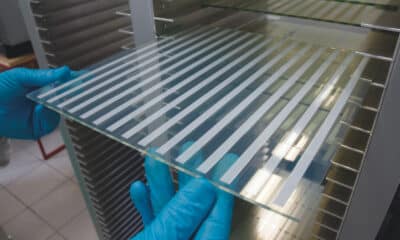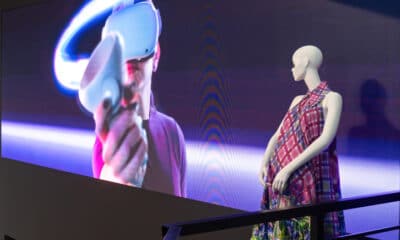 Our special "SWOT: Changes & Challenges" issue brings industry experts together to consider strengths, weaknesses, opportunities, and threats to screen printing. Textile expert Charlie Taublieb highlights one of screen’s stubborn strengths: textile printing.
Our special "SWOT: Changes & Challenges" issue brings industry experts together to consider strengths, weaknesses, opportunities, and threats to screen printing. Textile expert Charlie Taublieb highlights one of screen’s stubborn strengths: textile printing.
 Our special "SWOT: Changes & Challenges" issue brings industry experts together to consider strengths, weaknesses, opportunities, and threats to screen printing. Textile expert Charlie Taublieb highlights one of screen’s stubborn strengths: textile printing.
Our special "SWOT: Changes & Challenges" issue brings industry experts together to consider strengths, weaknesses, opportunities, and threats to screen printing. Textile expert Charlie Taublieb highlights one of screen’s stubborn strengths: textile printing.
Screen printing has been very good to me. It has given me a career and the opportunity to travel and meet printers from all over the world. I grew up printing on stationary tables. We were able to print cut pieces as contract printers for the garment industry, finished T-shirts for many markets, and yard goods for the home-furnishings industry, among others.
Today, I’m a textile screen-printing consultant. Increasingly, I’m hearing people from the digital community talk about how they will overtake textile screen printing. In my view, the unique strengths of screen printing for textile applications will prevent digital or any other process from taking us over.
The first reason is versatility. We can print with a large variety of inks onto an unlimited number of substrates using many different processes. Consider T-shirts, our most common application and the bread and butter of our industry. The shirts can be white, black, or any color in-between. They can be 100-percent cotton, a cotton/poly blend, 100-percent polyester, or just about any other type of fabric you can think of. They can be produced on a manual printer, automatic press, or print table. The number of colors isn’t a factor, as it is in digital. Oval presses are being built with 50 heads or more. The stationary print tables of my early days, which are now more commonly seen in developing countries, allow an unlimited numbers of colors since they don’t have specific stations for each screen. With all of these factors – the selection of inks, the shirt colors and fabrics, and the number of inks that can be printed – digital printing has limitations.
Advertisement
And it’s not as though digital is aiming at a fixed target. The textile screen-printing technology we have today is far more advanced than it was 10 years ago, and it will continue to move forward. Stencil systems have been developed to meet the demands of new ink systems and applications. Modern automatic presses feature a variety of new controls that not only allow for more consistent and repeatable print quality, but also eliminate bottlenecks and enhance screen printing’s advantages for longer runs.
Looking at the inks, we can print with high-density formulations, gels, and a wide variety of other products that produce a 3D image. Other specialty inks include glitter, metallic, suede, discharge, pearlescent, and many more. Each is handled differentially and produces finished products that are unique and that customers are willing to pay a premium for. Other ink developments have addressed popular, difficult-to-print materials such as performance fabrics, while being more environmentally conscious. No other process can claim to do all of these things, and until they can, textile screen printing is here to stay.
If the digital side is going to eliminate screen printing, why am I seeing so many manufacturers of digital printers working to add digital print stations to automatic screen printing presses? These “hybrid” presses are aimed at a specific niche – mass-produced designs with personalized name drops or other variable data that can be changed on each shirt – and they are a good example of how the processes complement one another. They aren’t even close to being competitive today.
For more from our "SWOT: Changes & Challenges" special issue:
Editorial Insights
Screen Printing: A Technology at a Crossroads, Steve Duccilli
Strengths
Why Industrial Applications Hold Tremendous Promise for Screen Printing, Mike Young
The Future of Functional Printing, Wim Zoomer
A Partial List of Industrial Applications for Screen Printing, Wim Zoomer
Advertisement
Weaknesses
The Limitations of Screen Printing in the Graphic Arts, Tamas S. Frecska
Why Web-to-Print Software Matters for All Printing Businesses, Eileen Fritsch
A Sampling of Web-to-Print Software, Eileen Fritsch
Opportunities
What if Screen Didn’t Exist? Andy MacDougall
Are Screen Printers Part of the Maker Movement? Kiersten Wones
Threats
Threats to Screen Printing, Inside and Out, Mark Coudray
Digital Ceramic Printing: A Logical Success, Sophie Matthews-Paul


 Case Studies2 months ago
Case Studies2 months ago
 Art, Ad, or Alchemy2 months ago
Art, Ad, or Alchemy2 months ago
 Andy MacDougall2 months ago
Andy MacDougall2 months ago
 Columns3 weeks ago
Columns3 weeks ago
 Editor's Note2 weeks ago
Editor's Note2 weeks ago
 Marshall Atkinson2 weeks ago
Marshall Atkinson2 weeks ago
 Thomas Trimingham2 months ago
Thomas Trimingham2 months ago
 News & Trends2 months ago
News & Trends2 months ago
















